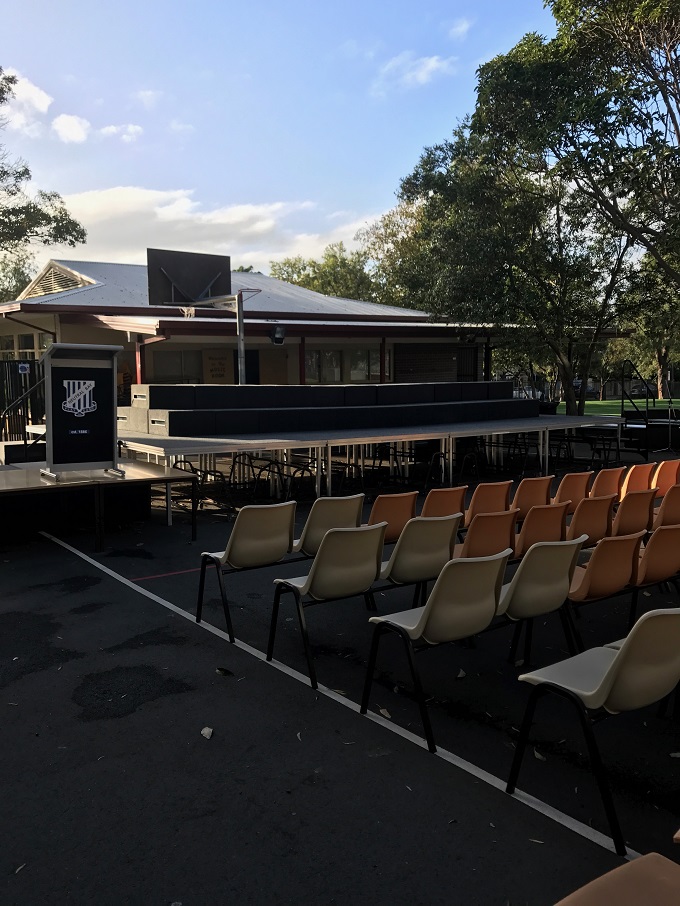Theatre Resources: No business like school showbusiness
The art of putting on a show is as old as time…

For schools, it can represent a highlight of the calendar year. Production time for students is often a love or a hate affair, but even for the most reluctant performers or stagehands, school shows represent a huge learning opportunity.

Whether a school is hosting their own performance or inviting another company to perform, plenty of preparation is required. Engaged, enthusiastic staff provide fuel for the process and the performance itself, and benefits to staff can also be huge.
Check out the full article in our latest print issue.
For some, drama and musical theatre will be their passion and driving a school production can provide an opportunity to share this passion with the next generation. As well as being a creative outlet, production time offers staff many leadership opportunities, requires excellent organisation, communication, and an ability to motivate and inspire.
Confidence is king, or queen, for performers and the courage it takes to grace the stage for some can be a huge barrier to overcome. The self-belief, sense of pride and joy that can come from this can impact students for life. Teamwork is promoted, memories and friendships made.

Backstage, too, there are many opportunities for students of varied talents and interests to get involved. Tech-minded pupils may enjoy working on sound and lighting, hard tech students might get on board with set construction and design students may wish to work on set and costume design.
The school show represents a chance for the whole school – and wider – community to come together. Parents may get involved in costume creation, prop sourcing and ticket promotion, while the wider local community is invited to along to support the school and enjoy some local theatre. Guests may include local dignitaries and school alumni, representing an opportunity for renewed engagement and support.

Music scores and scripts must be obtained by licence to avoid copyright infringement. For some schools, performance art and theatre departments are well resourced treasure troves of treasures and technology. For others, equipment, costumes, and sets must be sourced externally. To find out more, School News approached school theatre industry insiders for professional viewpoints and advice.
Speaking exclusively with us, company director Rachel Fentiman from Maverick Musicals and Plays, emphasised the importance of production quality for the whole school: “No matter whether a student is in the chorus or a lead, each takes away with them a sense of pride that they were part of a perfectly oiled machine that they created. Once they achieve something of this magnitude confidence naturally increases, which ripples through to the school community resulting in a self-confident young person who knows what they are capable of…
“The closer and more disciplined the cast, the better the performance. Students and teachers are able to develop respect and understanding for each other through working together to create a memorable show.
It’s an exercise in trust; trusting your fellow actors will remember their lines, trusting that sound effect will come at the right moment, trusting in yourself that you can carry your character through the story.”
The modern school production, she advised, is perhaps surprisingly traditional! “People are most definitely heading back to the classics. After an interesting 2020, to say the least, people are trending towards the comforting tales that we all love and know so well. The Jungle Book, Man of Steel, or Treasure Island for example, have been popular because they are charming and take you on a joyful journey that people of all ages enjoy.”

For teachers concerned about where to start when choosing a production for students, Rachel revealed that in her experience there’s no harm in ‘going big’! “If you are reading a musical script, thinking ‘oh my gosh, this musical has a cast of hundreds and a huge set, there’s no way we can do this show,’ you’d be surprised how much grandeur you can create with a minimal budget and how a small cast can seem like a huge one if you give multiple roles to your students, or space them strategically around the stage so it seems fuller.
“A few willing art students to paint cardboard flats for your sets, multiple tiers if you have access to stage risers, can help to fill a stage with interesting features while sticking to a tight budget.
“As for the music – never fear – if you don’t have access to a band, there is a myriad of shows that have full musical backing for your students to sing along with.”
COVIDsafe theatre assembly have been on everybody’s mind now that schools are back in session, but future restrictions are an ever-present worry. Select Staging Concepts’ Leonie McDerby shared some recommendations for schools looking to bring their special event offerings into the post-COVID era…
“Government recommendations advise us to use the great outdoors for gatherings and events, so why not take advantage of Australia’s excellent weather and design a stage system for exterior and interior school plays and assemblies? Portable and permanent stage solutions perform indoors and outdoors. I recommend schools look for systems that provide multi-functional solutions for every school event requirement. Ask the following: Does the stage floor finish allow for exterior use?

“Can a purchase of a flat performance stage provide the opportunity to convert the stage to a multi-height stage, tiered seating system, choir riser, catwalk or even into dining tables for graduation, just by changing a few stage leg heights and adding safety rails? How easy is the stage to move from indoors to outdoors? Can it be done with just one or two people?”
She added: “Aside from COVID-19 affecting all school events and performances, 2020 saw the trade war spark a real movement among Australian schools to look more closely into where their purchases are manufactured and where the hard-earned budget dollars are spent. The majority of staging systems sold in Australia are premade overseas and generally for interior use only – a very limiting option – so look for Aussie made options. Heading into 2021, schools are passionately looking to encourage positive students and staff wellbeing with diverse activities and events.”







